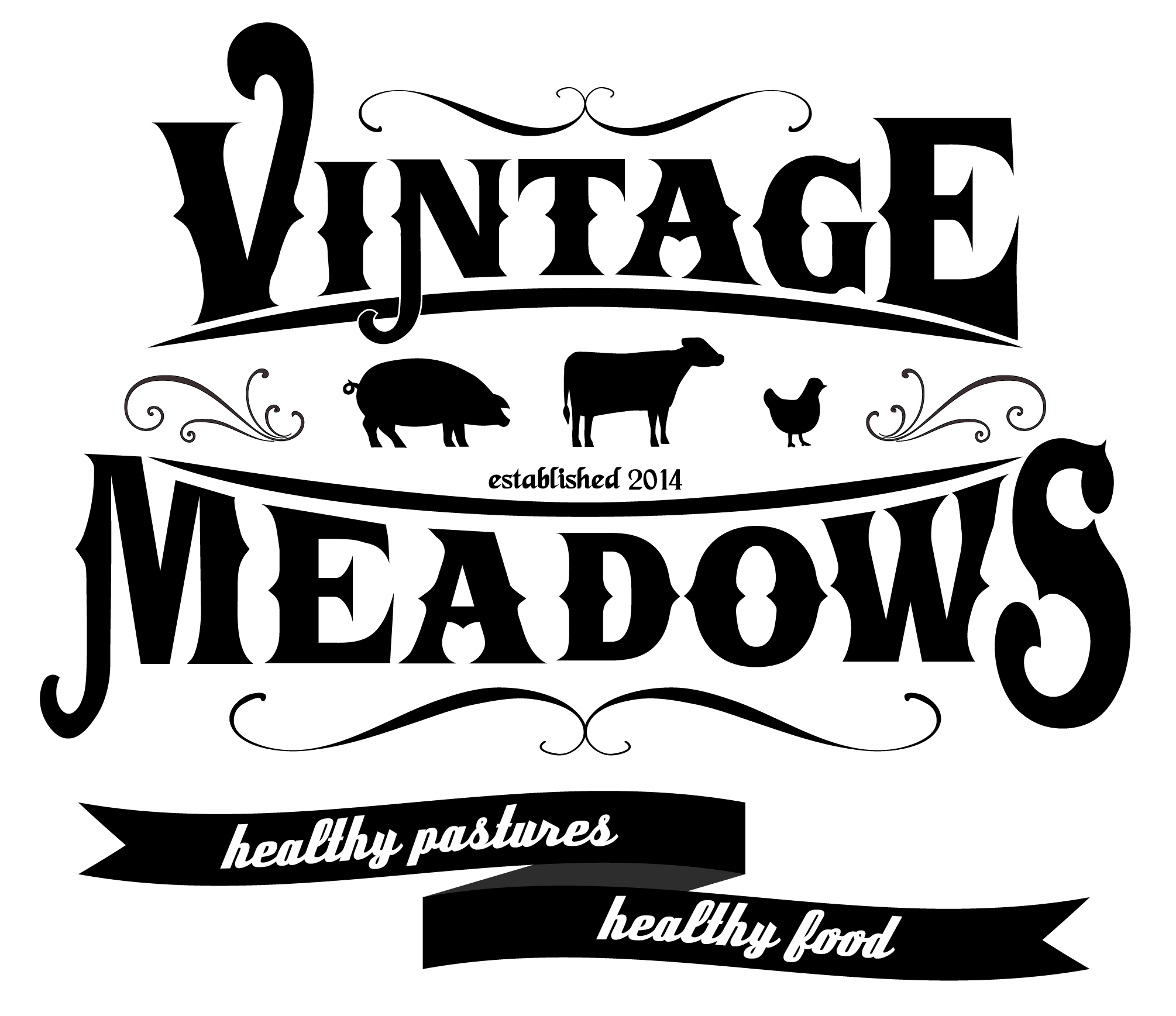Chore Time: A Virtual Visit to the Cattle Pasture
Chores are a daily occurrence at Vintage Meadows. On our farm, we raise beef and pork, and we partner with other farmers to raise the rest of our products. Come along with us as we take a look at what a typical round of cattle chores looks like, and explore the different aspects of what we do and why we do it.
Rotational Grazing
Vintage Meadows practices rotational grazing, which is, “the practice of containing and moving animals through pasture to improve soil, plant, and animal health. Only one portion of pasture is grazed at a time while the remainder of the pasture ‘rests.’
“To accomplish this, pastures are subdivided into smaller areas, referred to as paddocks, and livestock are moved from one paddock to another. Resting grazed paddocks allows forage plants to recover and deepen their root systems” (Rodale Institute).
Patiently waiting for the cattle to move to the next paddock. Sometimes they meander, sometimes they gallivant!
This practice not only preserves and enhances the vitality of our land, but it also contributes to producing the highest quality pastures for our cattle. It’s a win-win situation!
We use simple, portable, solar powered electric fence systems in our rotational grazing practices to make moving the cattle daily hassle-free. When it’s chore time, Ryan rolls up the fence wire (after disconnecting the electricity!) to let the cattle through to the next paddock. Since the cattle do this every day, they are always ready and waiting by the fence.
Our pasture is grown organically, without the use of chemicals. Moving the cattle every day means we go through a lot of pasture in the time it takes an animal to mature, but we prioritize their access to fresh grass because it is best for the animal and produces the highest quality products.
Securing the Fence
Can a thin, electrified wire control a 1200 lb animal? Nine times out of ten, yes!
Access to water is the next most important thing for our cattle herds. In this picture, Ryan uses our trusty Kubota to relocate the water tub, dragging the hose with him to fill it with.
A lot of our water systems have self-filling mechanisms, where the water will automatically stop when it gets to a certain level. This is most convenient for us because it means we don’t have to worry about the cattle running out of water during the hot summer weeks.
Our orange Kubota has been with us through thick and thin. It is our number one vehicle for chores, other than the tractor for feeding giant hay bales in the winter. It’s not uncommon to see a VM farmer driving up and down the roads, from pasture to pasture, in the afternoon and evening. Custom-made racks house all the supplies needed for setting up electric fences, repairing hoses, and other in-a-pinch fixes.
Essential Supplements
Our cattle are 100% grassfed. Our pastures are rich in plant variety, and different plants supply different nutrients. Cattle are designed to eat intuitively, which means that they naturally sense what their bodies need and seek out the varieties that meet those needs. We supply sea salt, kelp, and an essential mineral blend for them to access. Their bodies tell them what they need, and we provide it for them when they need it.
Your turn!
What questions do you have about our cattle? And what chores do you want to see next? Email us and let us know!





